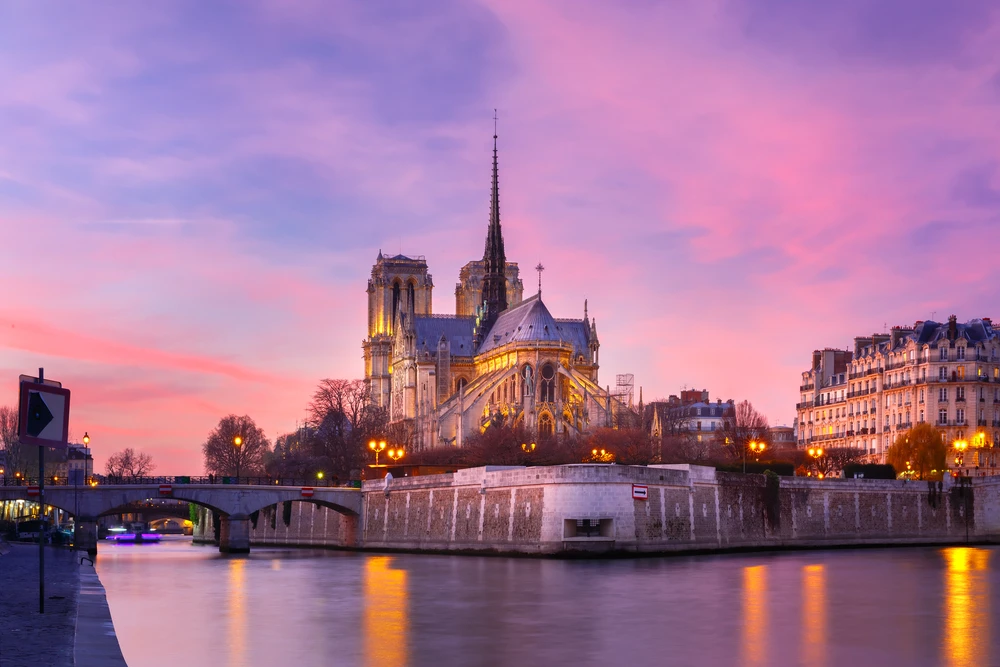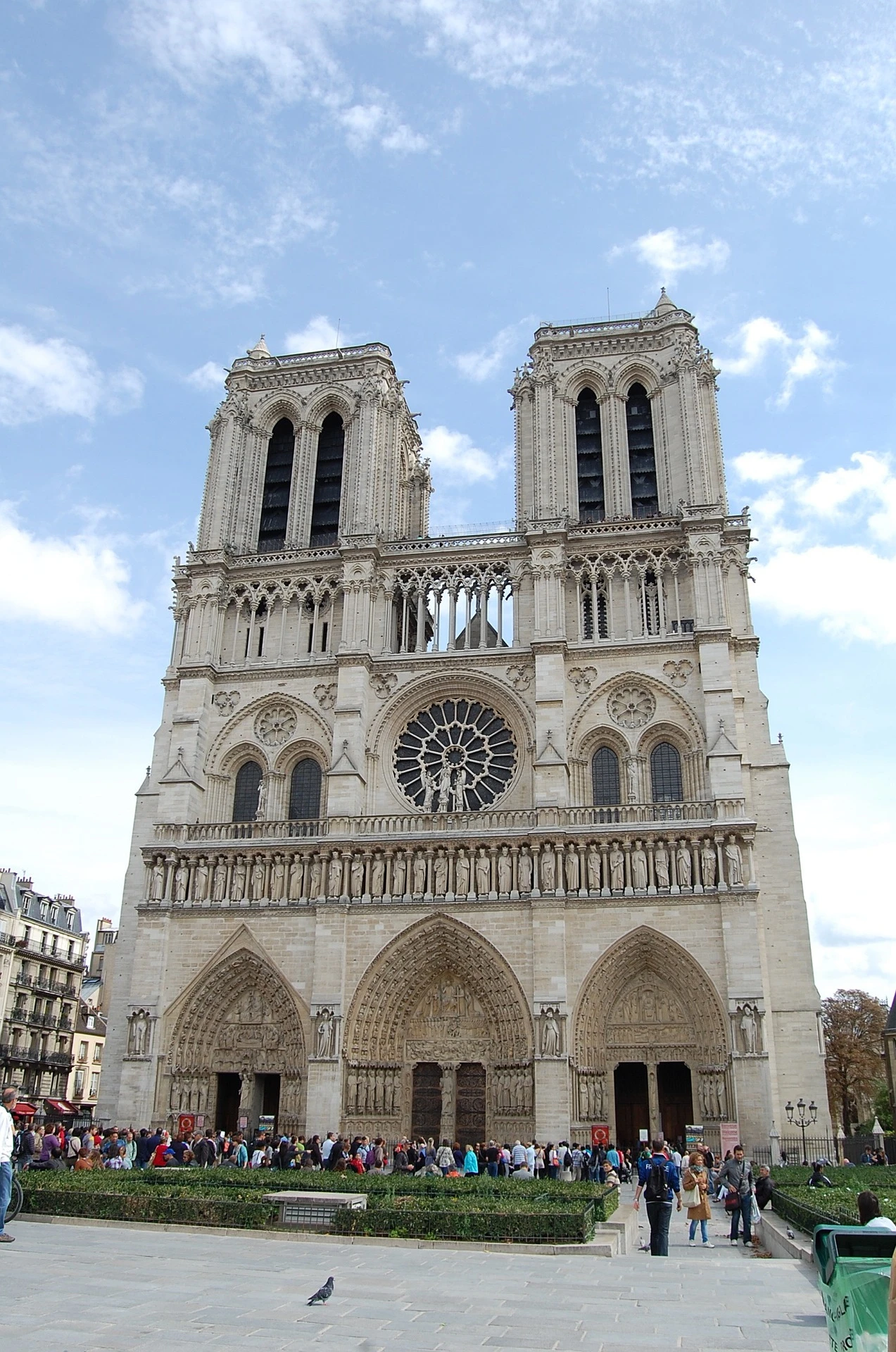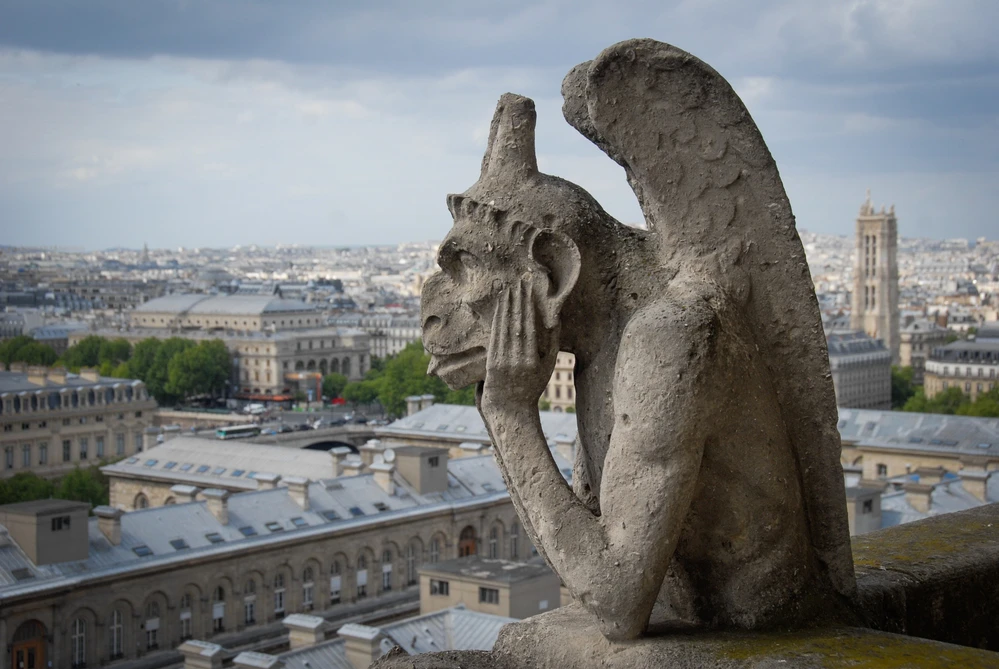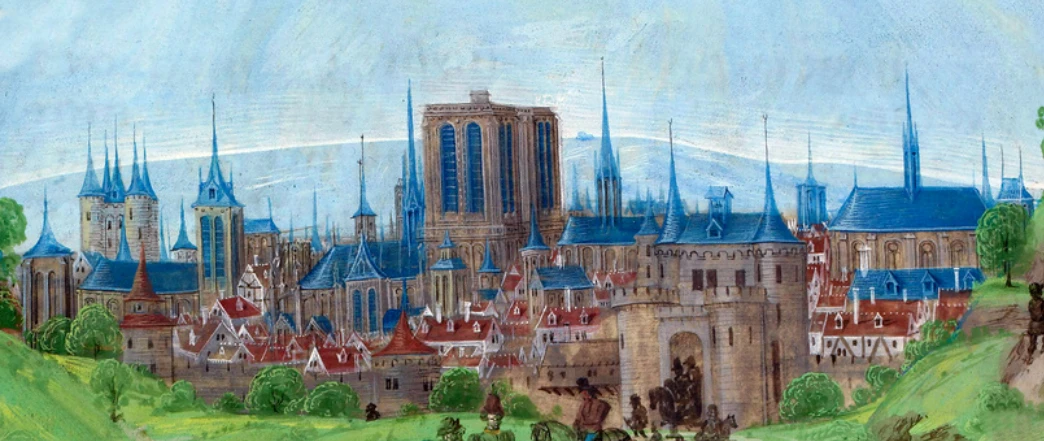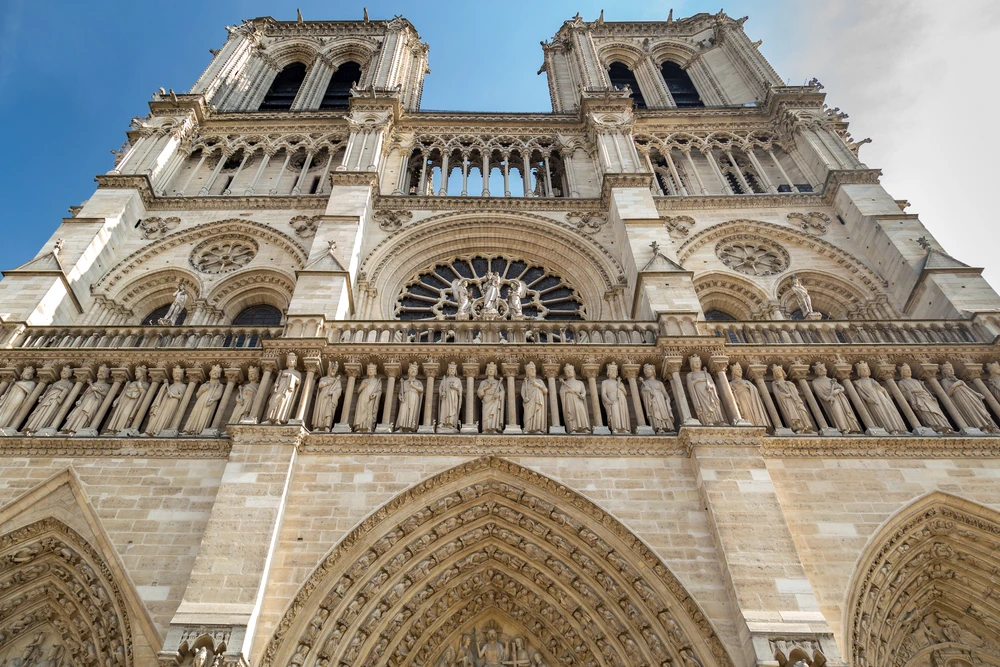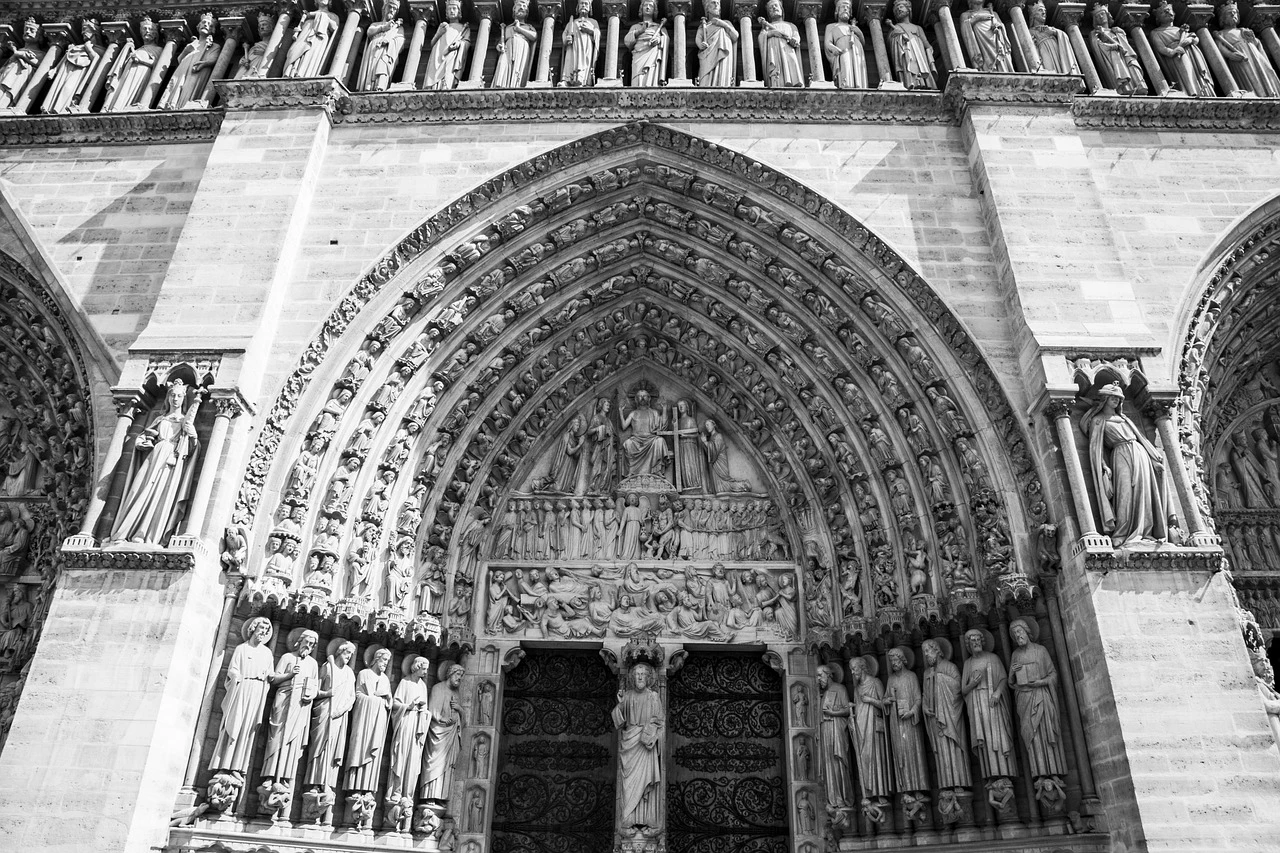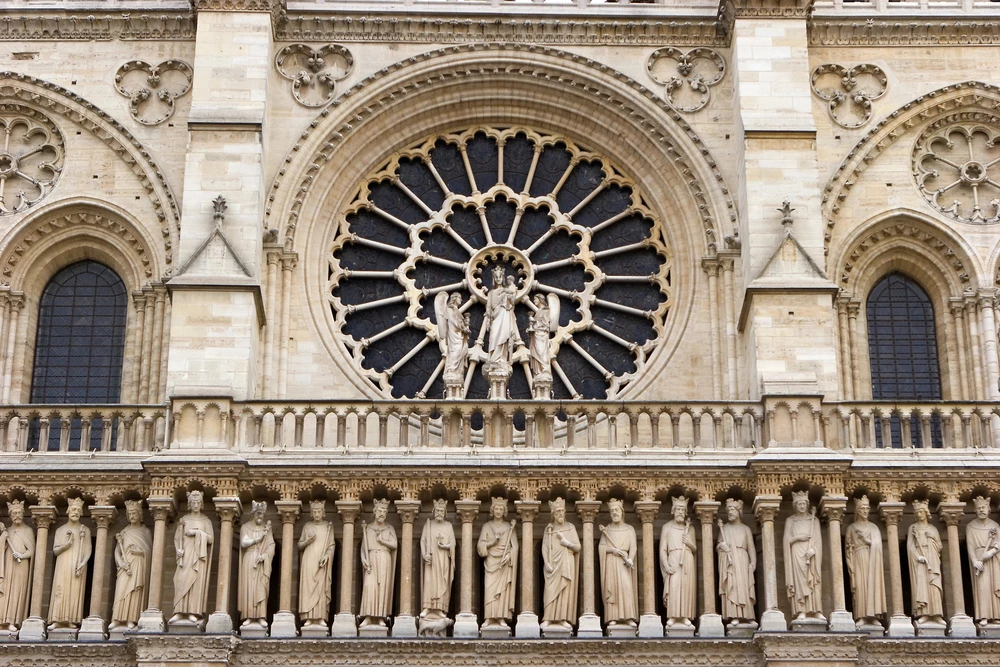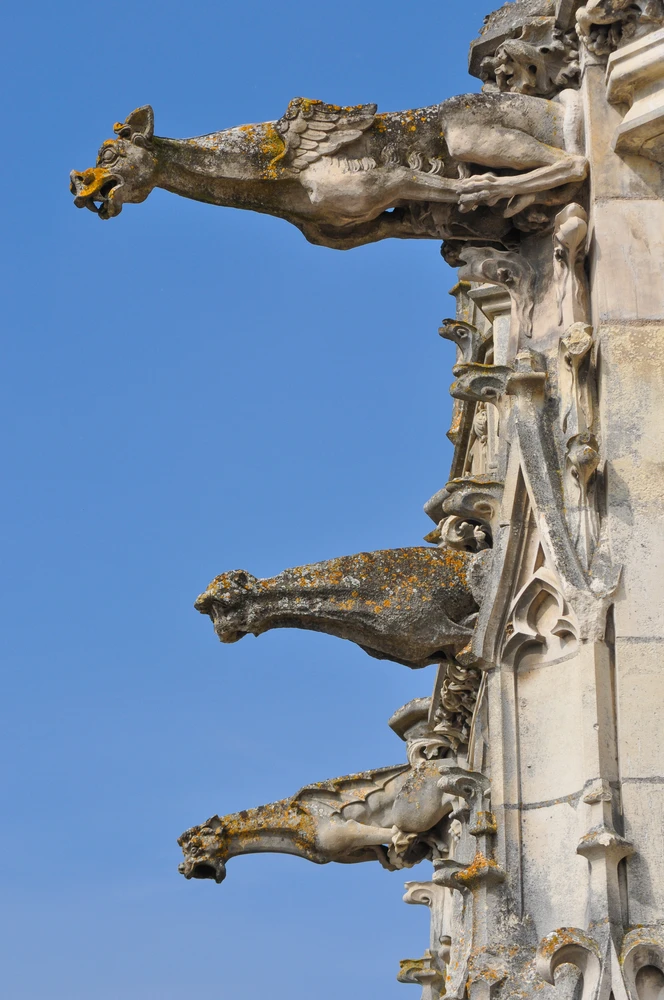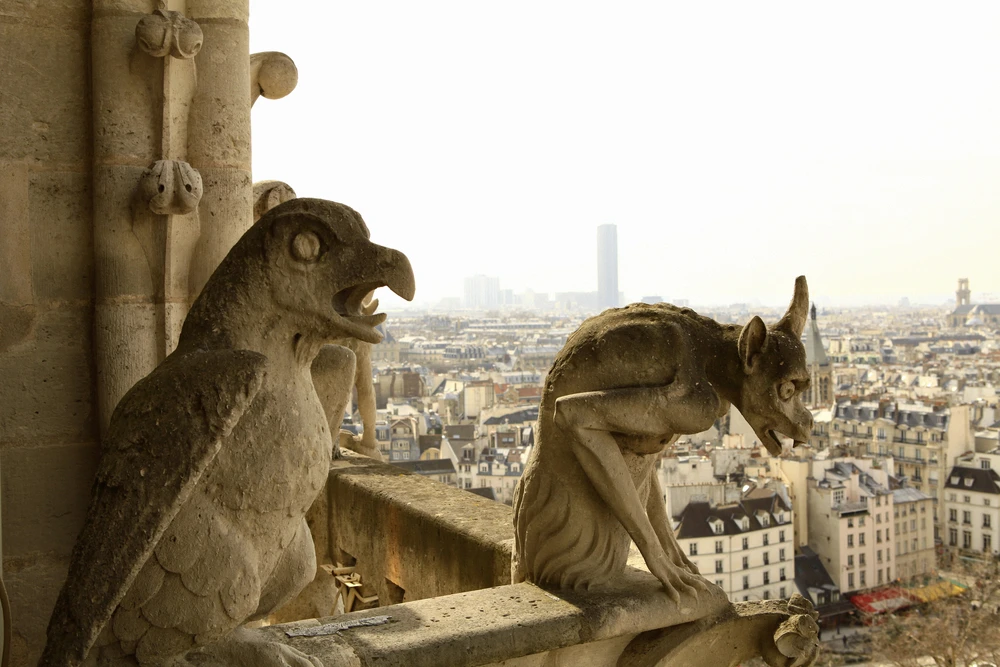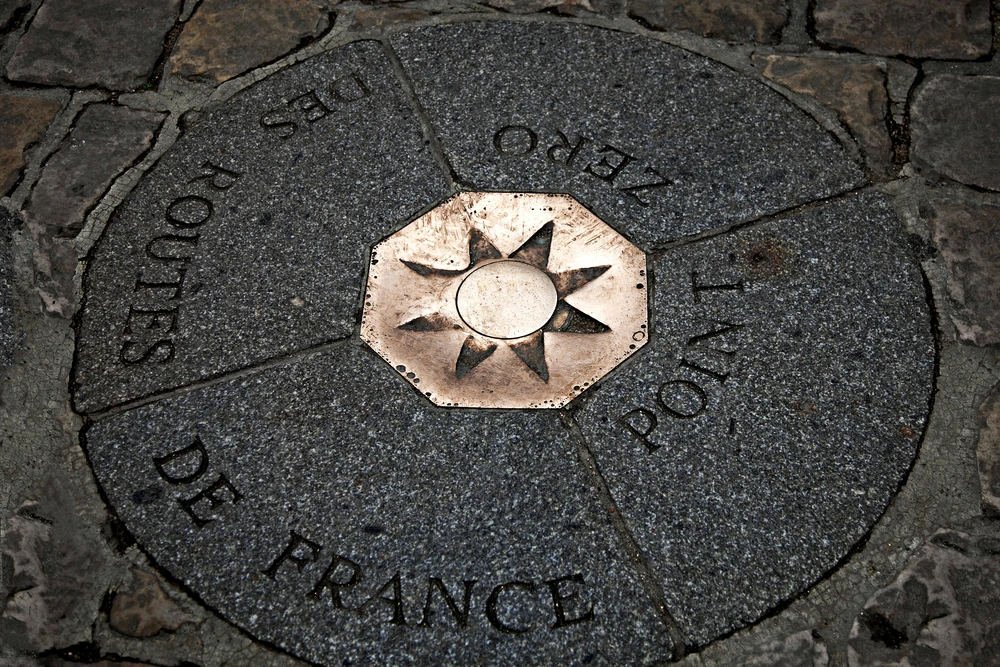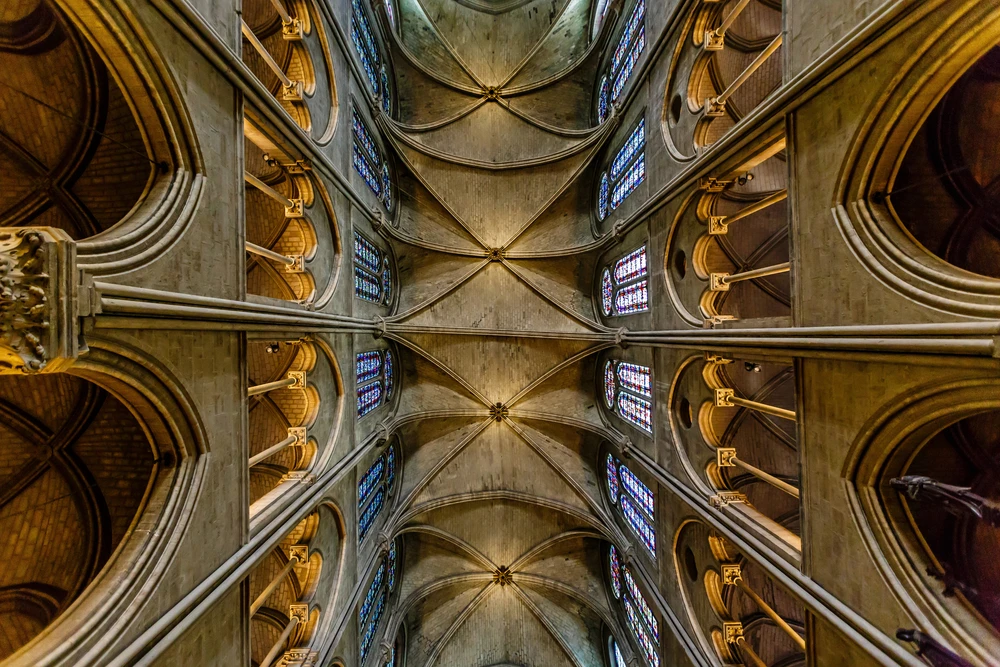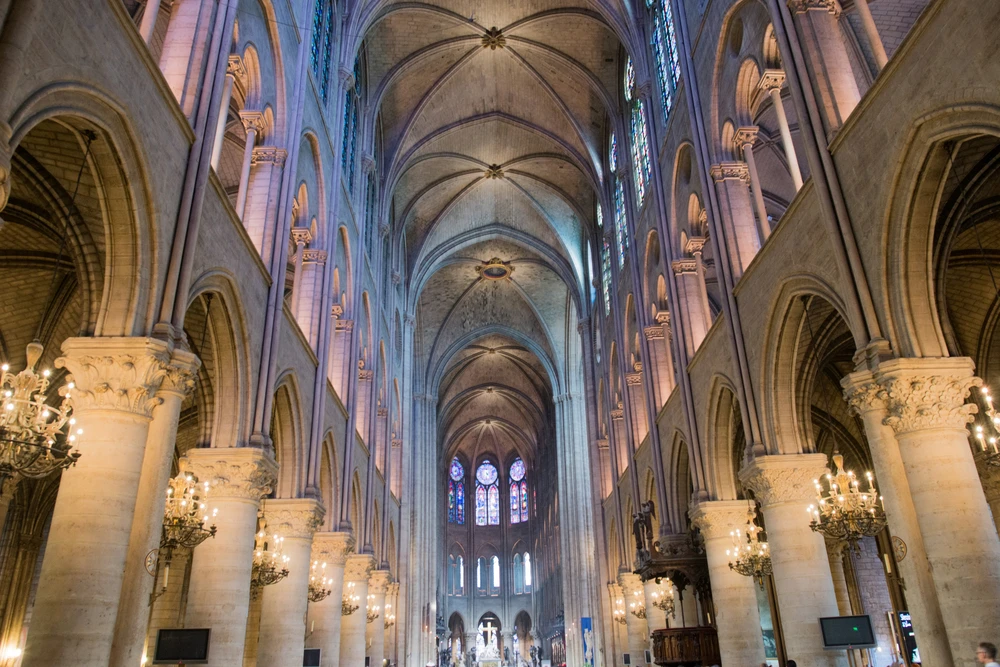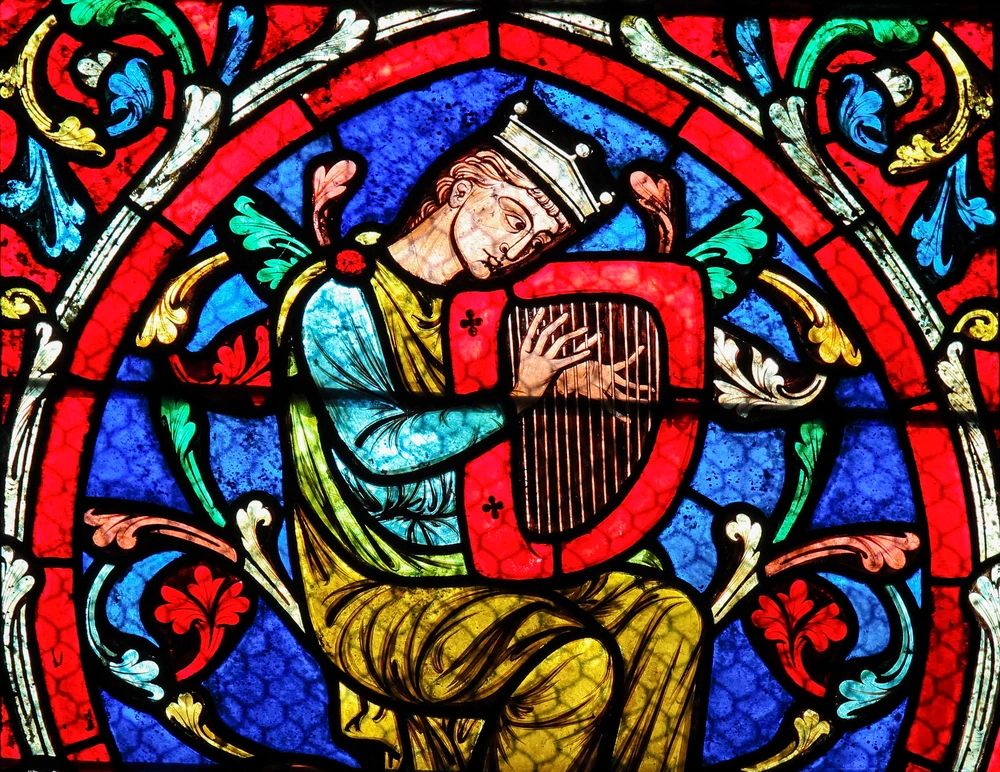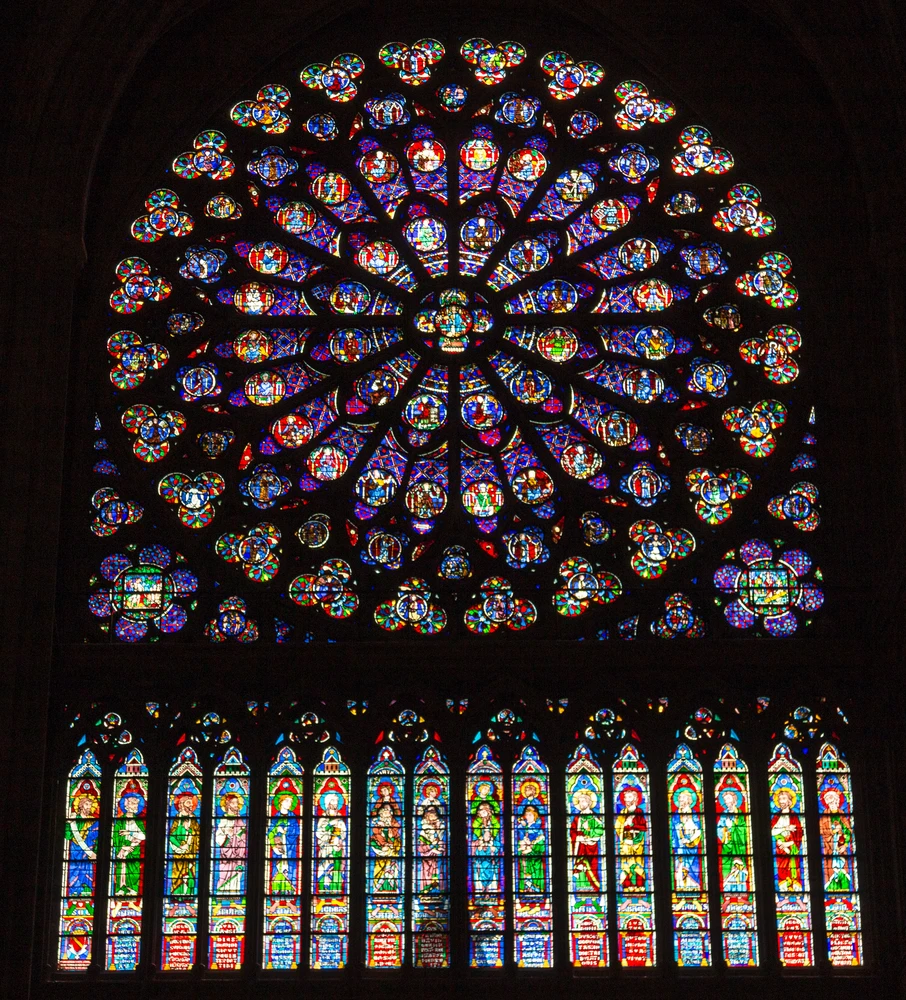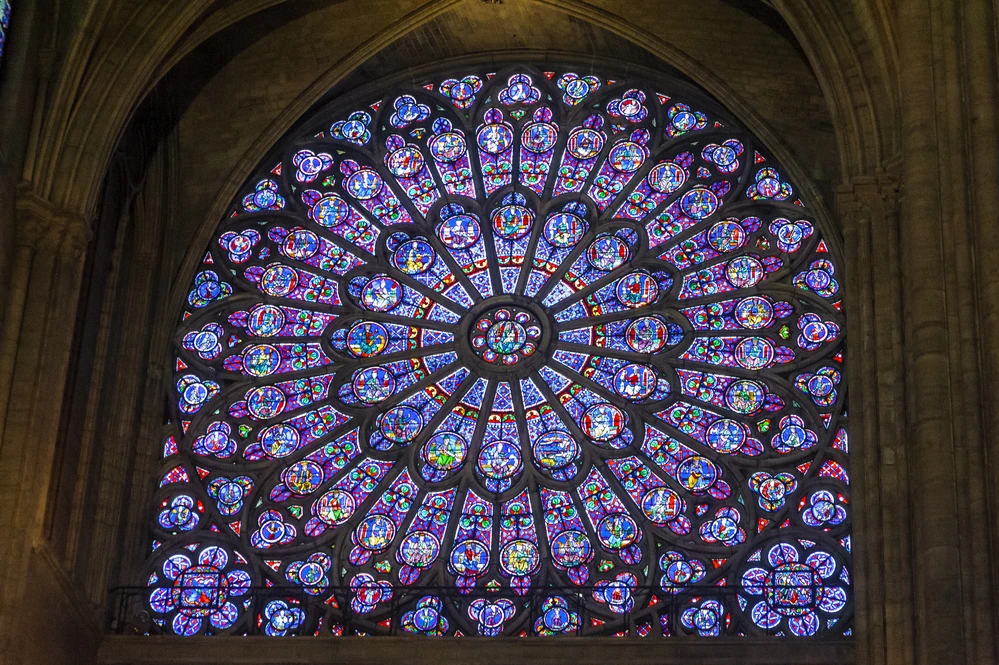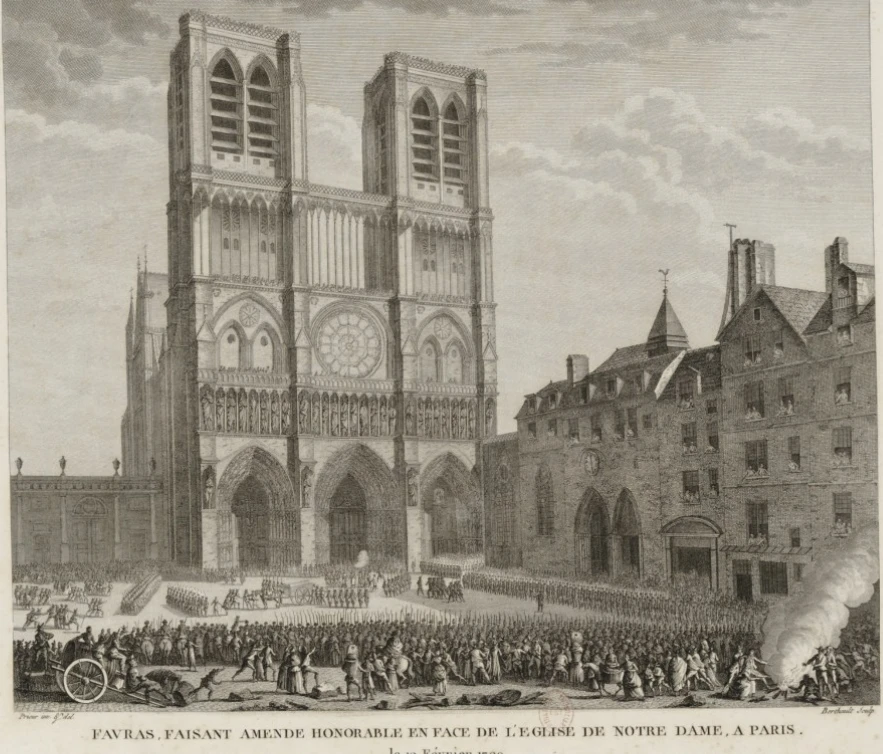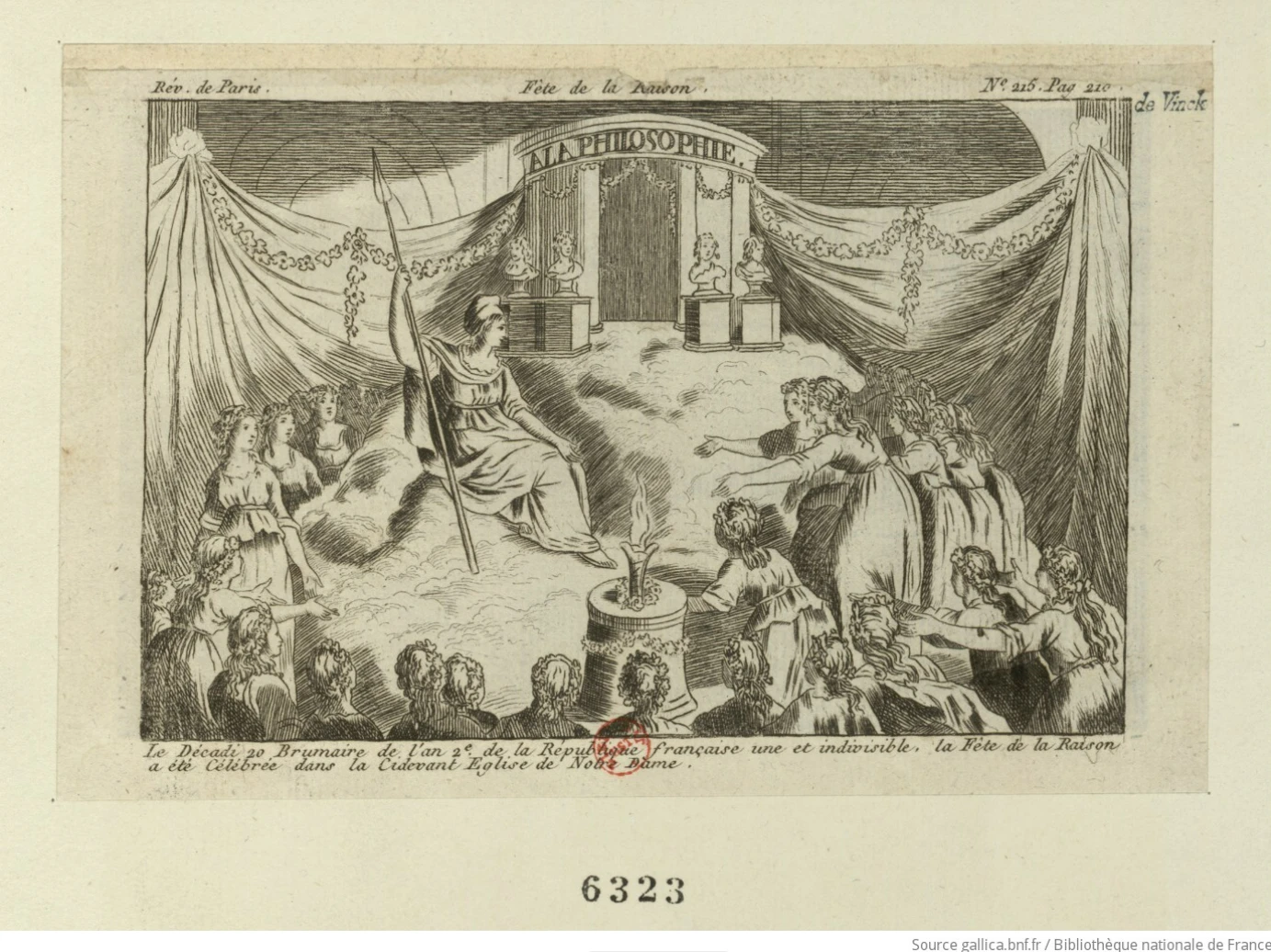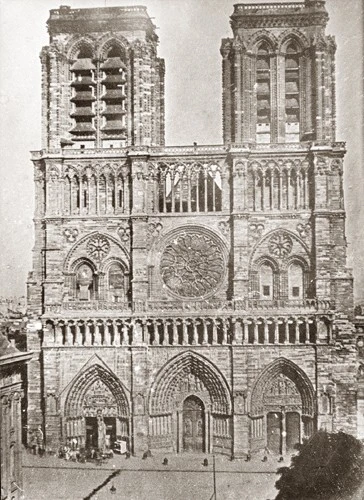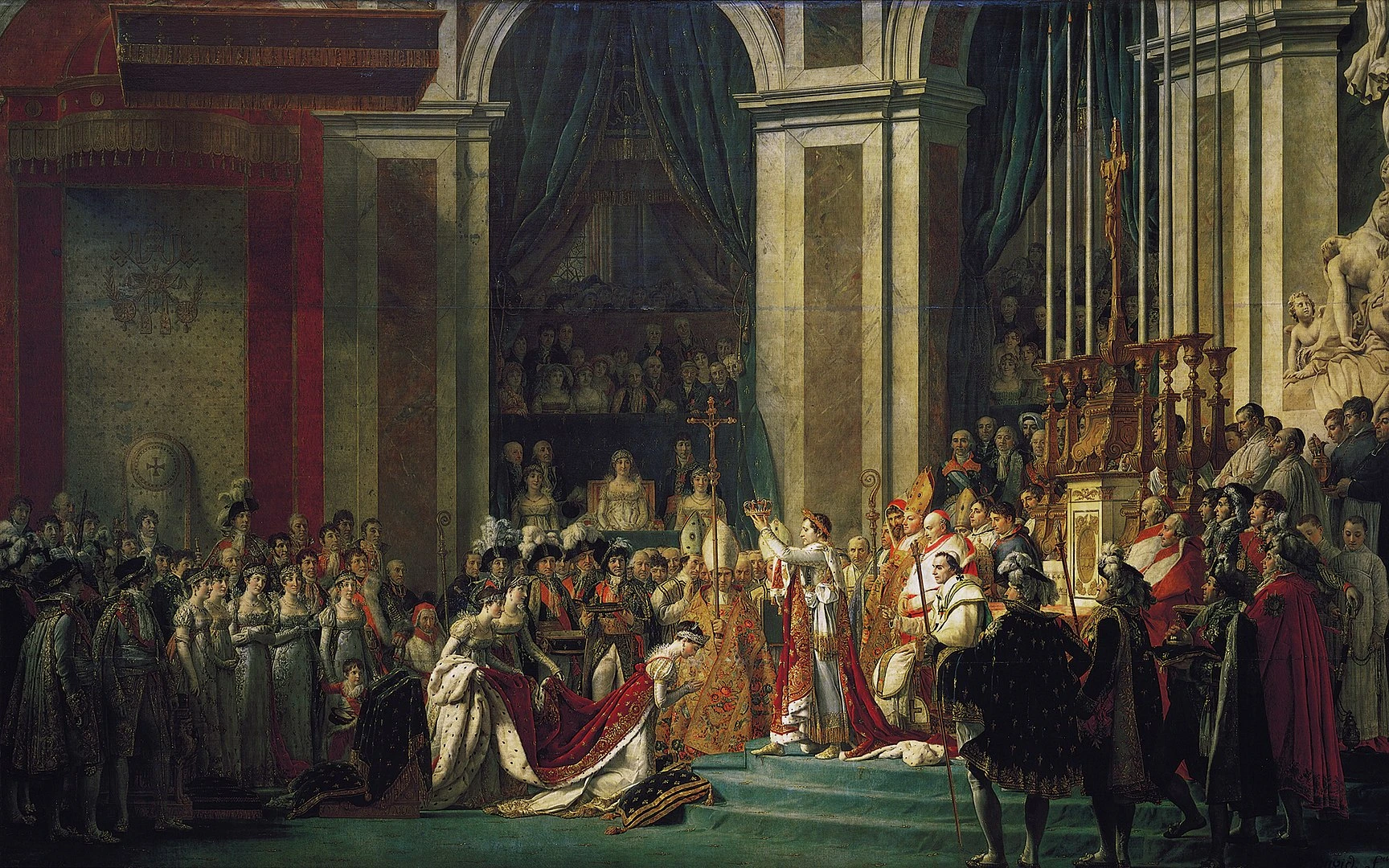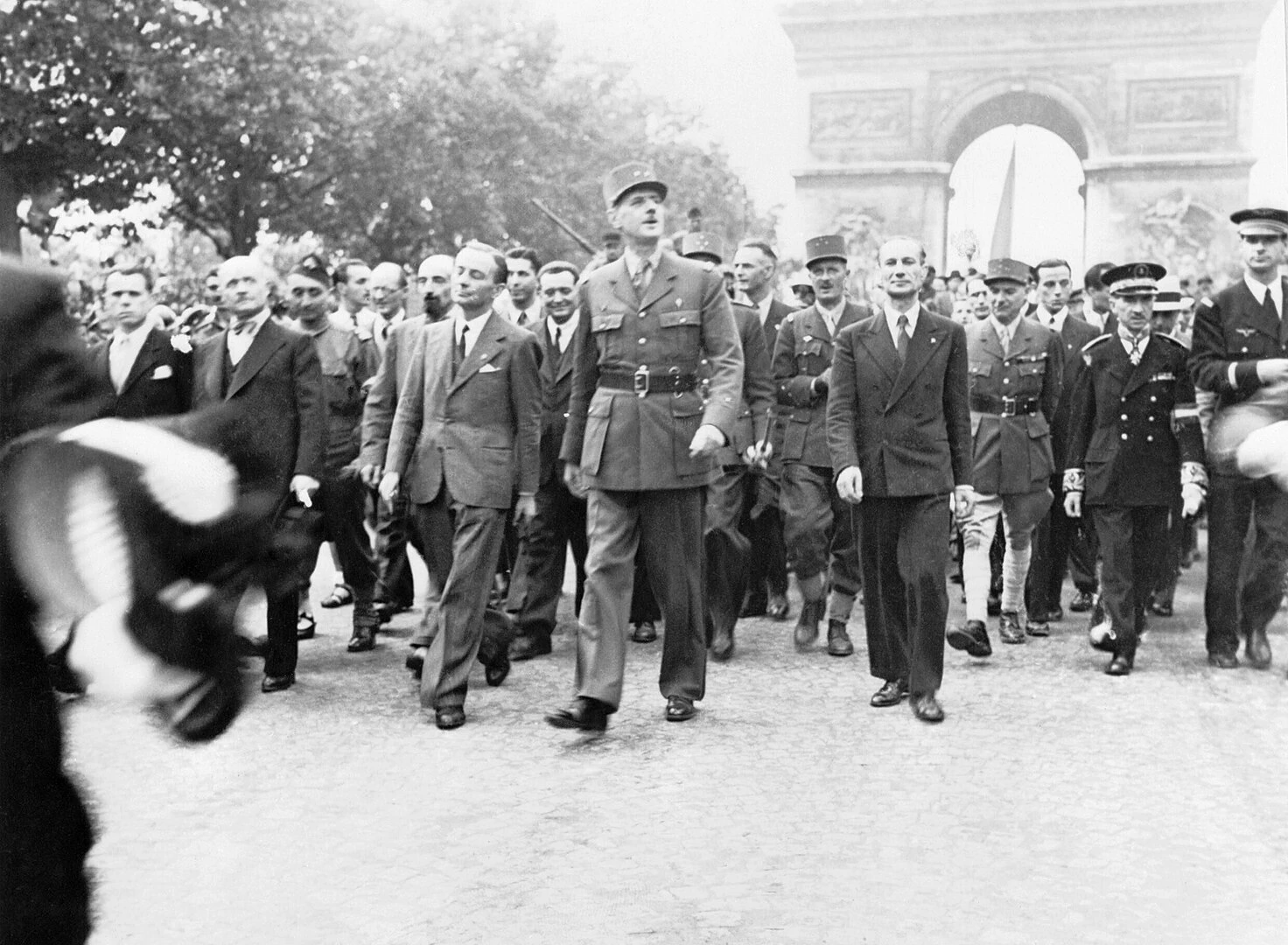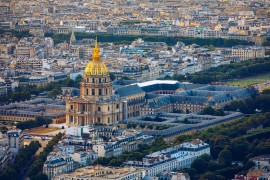Notre Dame de Paris in figures
Notre Dame emerging from the Ile de la Cité in the heart of Paris. Photo chosen by monsieur de France: olgacov via depositphotos
Notre Dame's length, width and surface area: impressive figures.
Notre-Dame de Paris is 127 metres long and 48 metres wide. The two towers are 69 metres high, and the spire is 69 metres at its highest point . With a surface area of 5,500 M2, it boasts 1,000 M2 of stained glass, 29 chapels and can accommodate up to 7,000 people, and even 9,000 if we add the grandstands.
Notre Dame de Paris is not the largest cathedral in France. Notre Dame d'Amiens is twice as large. Nor is it the tallest cathedral in France, that being Rouen at 151 metres. It is, however, the most famous and most visited cathedral in the world. Photo chosen by Monsieur de France: by LoneWombatMedia from Pixabay.
For the roof, the medieval framework, which burned down in 2019, was made up of some 2,500 beams, most of them in oak. They were all rebuilt according to the rules of the art, and the trees were taken (sometimes donated) from the forests of France to reconstitute what was called "the forest", so numerous were the trunks. The spire, too, was rebuilt on the model left in the 19th century by the architect Viollet le Duc. It is made of 500 tonnes of wood and 250 tonnes of lead. The statues surrounding it, representing the 12 apostles, are the original ones, and were not destroyed by the fire.
170 years to build the essentials. Several centuries to complete the work.
One of the earliest depictions of Notre Dame: the descent of the Holy Spirit by Jean Fouquet in 1450, 100 years after the towers were completed. Source for Monsieur de France: wikipedia / wikicommons.
The foundation stone of Notre Dame de Paris was laid in 1163 by Bishop Maurice de SULLY (CA 1105-1196). It was the 4th Christian building on this site, since a primitive church existed in the 4th century, succeeded by a Merovingian basilica which was replaced by a Carolingian cathedral and then a Romanesque cathedral, which soon proved insufficient for Paris, now the capital of the kings of France. A completely new Gothic cathedral was therefore built from 1163 onwards. Beginning with the choir and ambulatory (the rear of the cathedral), the structural work was completed , with the South Tower in 1240 and the North Tower in 1250 (and no spire, too expensive and too unstable). The Romanesque portal was destroyed and replaced. The buttresses were completed in 1363, holding up the walls. The interior was continued for several more centuries. Buildings were added around it, notably the cloister and the episcopal palace. These have since disappeared. Numerous modifications were made, notably in the 19th century when Notre Dame had to be saved, and when the architect Viollet le Duc added elements such as the famous spire and the gargoyles and chimeras that have become iconic of the monument. The famous stryge is the most famous.
The famous stryge, added in the 19th century, looks like it's been there forever. Photo chosen by monsieur de France: aurelie_rosman via depositphotos
Notre Dame: the cathedral of records
Notre Dame was long the tallest monument in Paris, before it was dethroned by the Invalides during the reign of Louis XIV in the 17th century. Before the COVID and its subsequent closure due to fire, it was one of the most visited monuments on the planet, and the most visited monument in France and Europe, with between 13 and 14 million tourists a year .
Notre Dame de Paris is one of the most visited monuments in the world. Photo chosen by monsieurdefrance.com: mac_sim via depositphotos
Notre Dame de Paris outside
Notre Dame emerges from a forest of steeples in the Middle Ages, as shown in this illumination by Jean Froissard, circa 1475. Image chosen by monsieurdefrance.Com: BNF / Bibliothèque Nationale de France.
Since Baron Haussmann's remodeling of Paris in the 19th century, which literally transformed the Ile de la Cité on which Notre Dame stands, the square in front of the church can be seen from afar. This was never the case in the past. The cathedral was surrounded by houses of varying heights and a network of streets and alleys. You could see it when you were in front of it.
The facade and towers of Notre Dame
When we enter Notre Dame. Photo chosen by Monsieur de France: gilmanshin via depositphotos
The two towers were completed in 1240 for the south tower (right) and 1250 for the north tower (left). Each is 69 meters high, and you have to climb 422 steps to reach the top. They were originally topped by a spire. They contain the 21 bells, each with its own name, and date back to 2013, when all the old bells were replaced except one: the oldest, the bumblebee named Emmanuel. Its godfather is Louis XIV, and it was first rung in 1683. Notre Dame's bourdon is one of the biggest bells in Europe, measuring 2.61 metres in diameter and weighing 13 tonnes, including 500 kg for the clapper alone.
The tympanums
The central tympanum depicts the Last Judgment, with Christ in majesty in the center and the 12 apostles on either side of the 2 doors. Photo chosen by monsieurdefrance.com: by Ichigo121212 from Pixabay
The entrance is flanked by 3 large doors, each topped by a sculpted tympanum. The tympanum of the North Tower (left) is dedicated to the Virgin Mary, while the tympanum of the South Tower (right) is dedicated to Saint Anne, Jesus' grandmother. In the center, the tympanum of the central portal is called the Tympanum of the Last Judgment. In the center is Jesus, seated in majesty. Below him is the archangel Saint Michael, who weighs souls and decides who will go to hell or stay close to Christ. On either side, we see the whole of humanity: rich, poor, kings and even a pope. Between the 2 doors of the central portal, Jesus teaches, and from each of the 2 doors, you can see the 12 apostles.
Notre Dame's Kings Gallery
The Kings' Gallery at Notre Dame de Paris. Photo chosen by Monsieurdefrance.Com: Birute via depositphotos
It literally runs across the front of the cathedral, and there are 28 crowned kings , representing the 28 generations of Judean kings. Originally, the statues, each just over 3.5 meters high, were painted in bright colors. All the heads were cut off during the French Revolution. Some are now in the Musée de Cluny. They were replaced in the 19th century during renovation work by Eugène Viollet-le-duc, the famous architect. Above, the Virgin Mary is surrounded by two angels symbolizing guilt and redemption. Behind her, the rose window is 9.60 metres high.
Gargoyles and chimeras of Notre Dame
The gargoyles of Notre Dame de Paris. Photo chosen by monsieurdefrance.com: scrisman via depositphotos
They are very famous. Some date back to the Middle Ages , but most were created during the renovation of the 1860s. Originally, gargoyles were used to drain off water and prevent it from stagnating on the edges of roofs. The gargoyles on the flying buttresses date back to the Middle Ages (around 1225). They are often made of fantastic, frightening animals.
Chimeras from Notre Dame de Paris. Photo chosen by monsieurdefrance.com: fotomem via depositphotos
Chimeras are statues that have no technical use, but are used to decorate certain parts of the facade, notably the balconies of the towers. They are the brainchild of Viollet-le-duc and 19th-century stonemasons. They are often burlesque, inspired by animals or phantasmagorical humans. The best-known is the stryge, who seems bored as he gazes at Paris with his head resting on one hand.
The stryge, the most famous of the chimeras born in the 19th century but which look like they came straight from the Middle Ages. Photo chosen by monsieur de France: sborisov via depositphotos
On the forecourt of Notre Dame: ground zero
It's from this famous zero point on the forecourt of Notre Dame that all distances in France are calculated. Photo chosen by monsieurdefrance.com: johan10 via depositphotos
In 1924, a plaque was installed on the forecourt of Notre Dame. All distances to and from Paris are calculated from this plaque. For other distances indicated on road signs between two communes, these distances are calculated from the town hall.
Inside Notre Dame de Paris
The interior of Notre dame. Photo chosen by monsieur de France: anshar via depositphotos.
What you can discover walking through Notre Dame
We're about to discover a cathedral that's been completely cleaned and white. After the fire of 2019, the interior was completely cleaned and restored. Centuries of burning candles, human breath and air pollution had darkened the interior of Notre Dame considerably. The nave is 13 metres wide, 60 metres long and 33 metres high.
The great nave of Notre Dame de Paris. Photo chosen by monsieur de France: izanbar via depositphotos
The choir, where the high altar is located, features a pieta (Mary at the foot of the cross). It is surrounded by two walls. The northern wall, on the right, is the oldest, dating back to the 13th century, and depicts moments in Christ's life since his birth. The ambulatory leads around the building, which has 29 chapels
The stained glass windows of Notre Dame de Paris
King David playing the harp. Stained glass window. Photo chosen by monsieur de France: jorisvo viadepositphotos
Notre Dame de Paris boasts almost 1,000 m2 of stained glass windows. It has to be said that Gothic architecture is all about making as much room as possible for light. So, windows were widened and walls were raised, to be held up by buttresses. Notre Dame's stained glass windows are very well known, especially the two large rosettes that adorn the interior. These are the oldest stained-glass windows in Notre Dame, dating from 1250 - 1260. The other stained glass windows from the Middle Ages were destroyed, notably in the 18th century, to be replaced by white glass, considered brighter. In the 19th century, Viollet le Duc replaced the white glass with stained glass windows in the spirit of the Middle Ages.
The south rose window dates from 1260. Photo chosen by monsieurdefrance.com: gilmanshin via depositphotos
The south rose window (left) was donated by King Saint Louis in 1260. It measures 13 meters in diameter. It comprises 84 panels on 4 large circles. It features several saints (including Saint Denis, the first bishop of Paris) and scenes from the life of Christ, such as the resurrection of Lazarus.
La rose Nord. Photo chosen by monsieurdefrance.com: [email protected]via depositphotos
The West rose window (right) is dominated by a Virgin and Child. It has 3 large concentric circles, and features the tribes of Israel, the vices and virtues and the 12 signs of the zodiac.
Victor Hugo and Viollet le Duc: the saviors of Notre Dame
Notre Dame de Paris in 1790 / Illustration chosen by monsieurdefrance.com: Print via Gallica.fr / BNF
The storm of the French Revolution
Hard times for Catholic worship during the French Revolution. The wave of anticlericalism that accompanied the revolutionary events hit Notre Dame hard, as it was obviously a symbol for a France that had suffered from the many abuses of the high clergy... In 1789, it was "placed at the disposal of the Nation", which became its owner (it had previously been owned by the diocese of Paris). Antoine de Juigné (1728-1811), the archbishop of Paris, left the city and emigrated in 1790, seeing the turn of events. The Civil Constitution of the Clergy (1790), which secularized Church property, led to the disappearance of the Notre Dame chapter. Priests had to swear an oath to the Constitution, and thousands refused (and went into hiding). As a result, a "swearing" bishop (who chose to take an oath to the Constitution) was elected and installed. His name was Jean Baptiste Gobel (1727-1794). Incidentally, he was not bishop of Paris, but bishop of the Seine, the brand-new department created in 1790. He could do nothing about the decrees gradually dispersing the contents of Notre Dame. The Revolution needed money.
The cult of reason was installed for a time at Notre Dame to replace the Catholic cult. Illustration chosen by monsieurdefrance.Com: print via Gallica.fr / BNF
Gobel's episcopate ended badly, as he was guillotined in 1794. In 1793, the cathedral was withdrawn from Catholic worship. What remained of the treasure disappeared, melted down, stolen... A few relics were saved, such as the Crown of Thorns. Christian and monarchical symbols were destroyed inside and out, as they were in many French churches. On November 10, 1793, in front of a large crowd, Notre Dame was turned into a temple of Reason. A ceremony carried a young girl in triumph within the walls. Catholic worship did not return until 1795, albeit rather discreetly. It was restored to worship in 1802. Time and 10 years of vandalism had considerably damaged the monument, which was repaired and redecorated to welcome the coronation of Napoleon 1st in December 1804. By the mid-19th century, it had become so fragile that it was in danger of collapse...
Victor Hugo and the Hunchback of Notre Dame
When Victor Hugo published his novel "Notre Dame de Paris" , bringing Esmeralda and Quasimodo into the world's imagination, he also brought the fantastic monument to light at a time when the funds for a first restoration project had run out, and everything remained to be done to renovate the site. The statues destroyed by the Revolution had not yet been replaced, many stones were missing, many pinnacles had fallen, and some were threatening to do the same. The success of the novel and a growing awareness on the part of Parisians and the French government put Notre Dame at the heart of a huge renovation project that would not only save it, but also change it. The novel, for its part, has followed its own destiny since its publication in 1832; it is known the world over, and has also been staged in theater, cinema, cartoons and musicals - one of the greatest musicals in French history is called Notre Dame de Paris".
The first page of an 1844 edition of "Notre Dame de Paris". Illustration chosen by monsieurdefrance.com: Aimé de Lemud, Public domain, via Wikimedia Commons
Lassus and Viollet le Duc: the rebirth and metamorphosis of Notre Dame de Paris.
Over the course of several years, architects Jean Baptiste Antoine Lassus (1807-1857) and Eugène Viollet-le-duc (1814-1879) undertook the renovation of Notre Dame de Paris. It was high time, as the building was so badly damaged that the idea of destroying it had been considered for some time. The word "renovation" should not be understood in the same way as it is today, at a time when attempts are being made to restore the building as closely as possible to its original state. Architects repair, of course, but they also transform. The Middle Ages spire, destroyed in the 18th century, was replaced by a much larger spire, 96 metres high (and surrounded by the 12 apostles, one of whom bears Viollet-le-duc's signature).
Notre Dame on an 1840 daguerotype, showing its dilapidated state.The Galerie des rois is still empty of statues. Illustration chosen by monsieurdefrance.com: By Noël Paymal Lerebours - http://www.luminous-lint.com/app/image/2195803712147396029963586417/, Domaine public, https://commons.wikimedia.org/w/index.php?curid=15461275
Chimeras, phantasmagorical characters, are added (notably on the towers) and become iconic for Notre Dame. The clear stained glass windows of the 18th century are replaced by colored ones. The interior is sometimes painted. Furniture was created from scratch, since nothing remained. Viollet-le-duc, who took charge of the project after Lassus's death, wanted to give a sense of the Middle Ages he imagined. His work, sometimes debated, has stood the test of time and, even if the question arose at the time of the fire in 2019, it has been integrated into the edifice to such an extent that the spire that was destroyed was replaced by an identical one, created by the journeymen using plans left by the architect.
4 events at Notre Dame
1239 Saint Louis lays the crown of thorns here
While undertaking the construction of the nearby Sainte Chapelle to receive the Holy Crown, Saint Louis deposited the relic at Notre Dame. It remained there for several years before being installed in the completed Sainte Chapelle. It returned to Notre Dame in 1806 and has remained there ever since. It is displayed and venerated by the faithful during Holy Week. It forms part of Notre Dame's treasury, alongside other relics such as the nail and wood of the Cross, and the Shirt of Saint Louis. In the Middle Ages, Notre Dame saw the demise of the Templars (their leaders were burned alive not far from Notre Dame, which they could see from their pyre). It saw the English settle in Paris for much of the 100 Years' War, before being driven out of the capital. It was at Notre Dame that Joan of Arc's rehabilitation trial was held in 1453.
August 18, 1572: the beginnings of the Saint Bartholomew's Day
Queen Catherine in front of piles of corpses leaving the Louvre. Illustration chosen by Monsieur de France: By François Dubois , Édouard Debat-Ponsan, Public domain, via Wikimedia Commons
On August 18, 1572, Catherine de Médicis, Queen Mother, and her son King Charles IX once again attempted to reconcile Catholics and Protestants through marriage. The idea was to unite the two clashing religions, often in bloodshed, by marrying Marguerite de Valois (1553-1615), better known as "Queen Margot", a Catholic, to Henri de Navarre (1552-1610), a Protestant prince. Tensions ran high, as the marriage was morally condemned by very Catholic Parisians, and many Protestants had come to attend the princely wedding. The wedding took place on a platform in front of Notre Dame. A few days later, the bells of Paris churches, including Notre Dame, sounded the alarm, and the massacre of Protestants began on Saint Barthélémy's Day. After the death of Protestant leader Coligny, assassinated by Catholic leader Duc de Guise, the massacre spread first to the Louvre, then throughout Paris. An estimated 3,000 men, women and children died in Paris. The massacre also took place in several French towns, killing 10,000 people.
December 1804: The coronation of Napoleon 1st
On December 2, 1804, Napoleon 1st (1769-1821) was crowned Emperor of the French at Notre Dame, in the presence of Pope Pius VII, who had come from Rome to bless the new emperor. The King crowns his wife Josephine Empress. 101 cannon shots were fired just as the Emperor left Notre Dame (which was more or less rehabilitated for the occasion). The scene was magnificently portrayed by the painter Jacques-Louis David (1748-1825) in a work produced between 1805 and 1807, which can be seen in the Musée du Louvre.
"Le sacre de l'empereur Napoléon 1er" by Jacques Louis David. Illustration chosen by Monsieur de France: Domaine public, https://commons.wikimedia.org/w/index.php?curid=7564091
The imperial family remained loyal to Notre Dame, as Napoleon III married Eugénie de Montijo there in 1853. Their son, the Prince Imperial, was baptized there with great pomp and ceremony in 1856.
1944: the liberation of Paris.
Spared by the Commune in 1871, when the Paris City Hall and the Palais des Tuileries were destroyed (a fire set in the cathedral was quickly extinguished), and lightly hit by a German shell during the First World War, Notre Dame was at the heart of the fighting for the liberation of Paris in August 1944. Shots were still being fired on the prefecture side when General de Gaulle and General Leclerc entered Notre Dame to hear a magnificat after descending the Champs-Elysées, the bells ringing out to announce the Liberation of France's capital. Notre Dame is at one with the great events taking place in Paris. Happy, like the Liberation, or very sad, like when it rang the death knell for 15 minutes on November 15, 2015, in memory of the victims of the November 13 attacks (the Bataclan, the Stade de France...).
General de Gaulle walks down the Champs-Elysées towards Notre Dame to celebrate the Liberation of Paris. Image chosen by monsieurdefrance.com: By Author Unknown - http://media.iwm.org.uk/iwm/mediaLib//7/media-7068/large.jpgThis photograph HU 66477 comes from the collections of the Imperial War Museums, Domaine public, https://commons.wikimedia.org/w/index.php?curid=25092775
2019 le grand incendie
On April 15, 2019, just as the renovation work on the spire had begun and scaffolding was being erected, fire broke out inside the 8-century-old roof structure and spread rapidly. By evening, after 15 hours of firefighting by the Paris fire department, the spire and roofs were completely destroyed. The interior of the building was also hit, at choir level. But Notre Dame was still standing, and a gigantic surge of national and international solidarity made it possible to finance and launch the reconstruction work a few months later , with the aim of opening the cathedral in the year of the Olympic Games, 5 years later, in 2024. The building is once again covered and visible without scaffolding, and the spire is back in the Paris sky for the Paris 2024 Olympic Games. The interior is scheduled to open on December 7, 2024.
How do I get to Notre Dame de Paris?
Notre Dame at sunset. Image chosen by Monsieurdefrance.Com: STYLEPICS via depositphotos.
GPS address :
Place Jean Paul II, 75 004 PARIS.
Nearest parking lots: Indigo Lutèce, boulevard du Palais (reservation required) and Indigo Hôtel de Ville, 48 rue de l'Hôtel de Ville.
Metro
Line 4 : Cité or Saint Michel station
Line 1; Hôtel de Ville station
Line 7, line 11
RER B and C stations Saint Michel Notre Dame
Bus
Lines: 87 / 47 / 75

